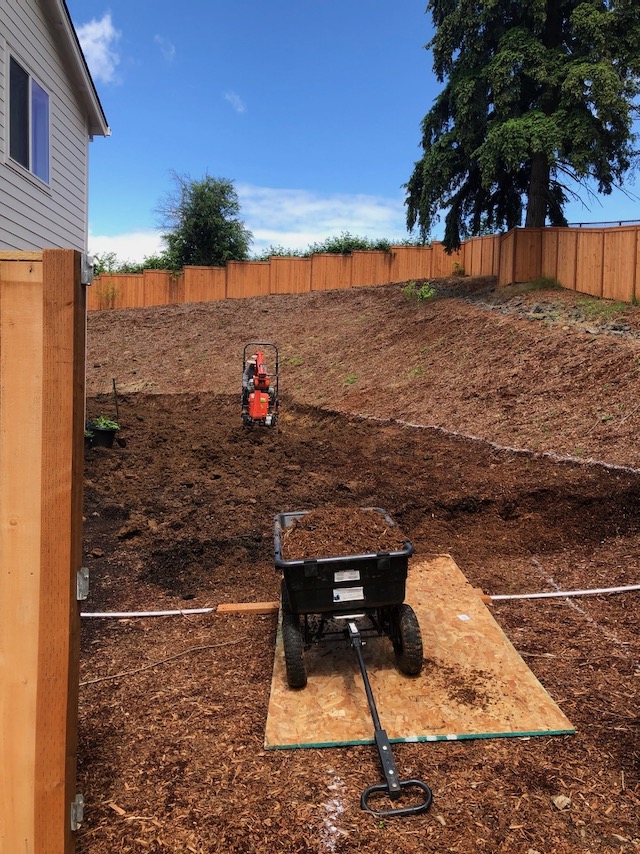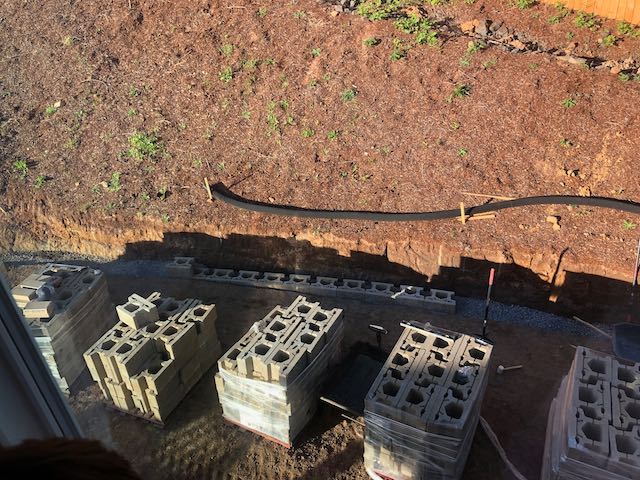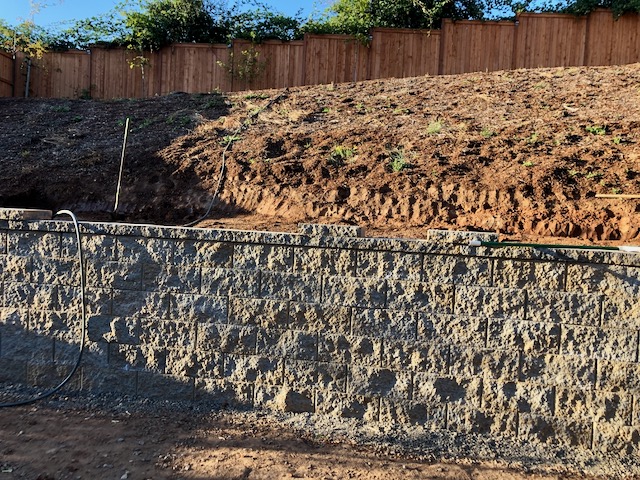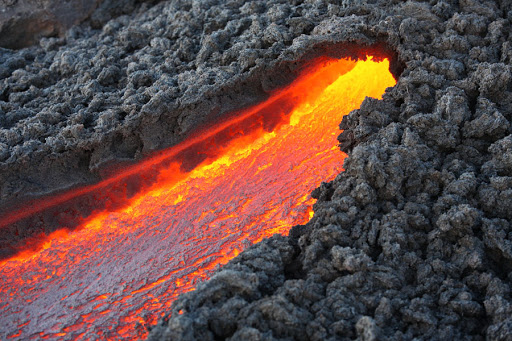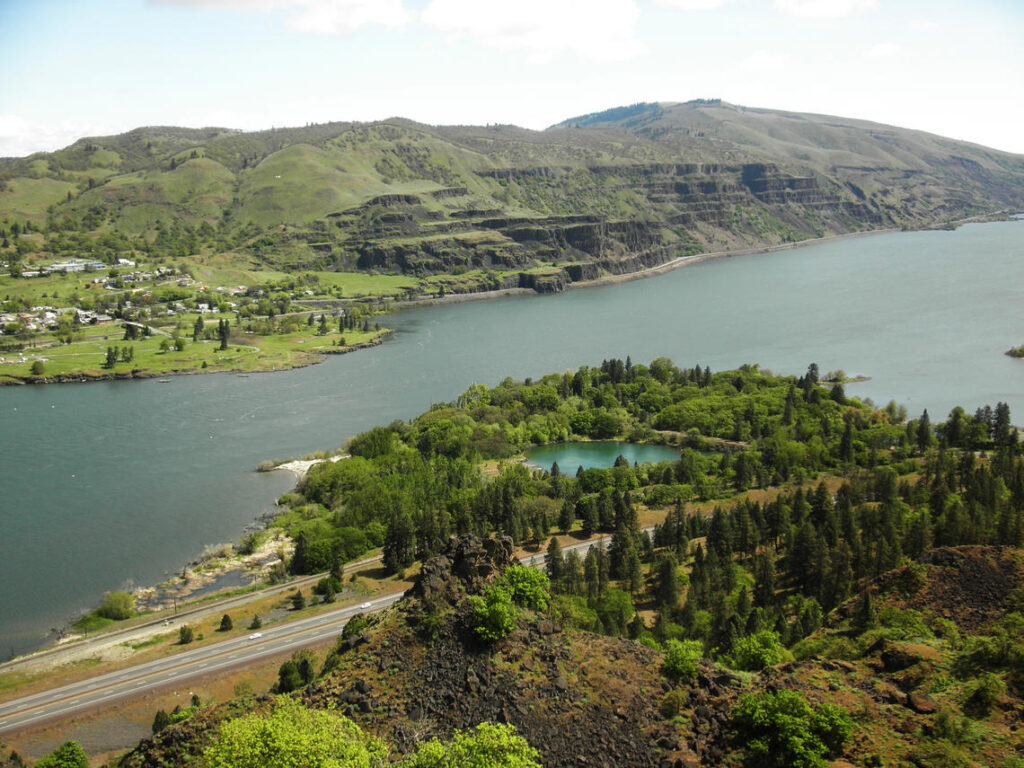While visiting my son in Washington, we’ve been building a retaining wall to hold back the dirt and mud when the rainy season approaches. The first time we drove out, we rented an excavator to move the dirt and cut into the bank. After a week of that, we returned home and left my son with the job of building the wall. We left the yard in a bit of chaos — a wall of dirt and mud, a trench, gravel, drain pipe. But we had started the process of creating a wall. In three months, my son had built a four-foot wall, 110 feet long. (The bricks were 100 lbs each — a good morning and evening workout.) This last week, we arrived in time for the capstones, and some more backfilling along the wall, and tree pruning.
Driving home along the Columbia River, I thought about the walls of volcanic rock on either side of the river. A massive volcanic flow created the basin for the Columbia River, which is called the Columbia River Basalt Group (CRBG):
a classic example of flood basalt activity that erupted more than 350 lava flows… located along the Washington/Oregon/Idaho border. The magma that fed these massive eruptions may have come from a plume-like upwelling from the mantle called a hot spot. Since the time of the CRBG eruptions, the North American plate has moved in a west-southwestwardly motion, and that hot spot is now believed to reside beneath Yellowstone volcano in northwest Wyoming.
If I’m not the one taking my turn driving, I like to look up the history of the geology of the areas. I found an app for my phone called Rockd that locates your position on the map, and then you can read about the geology. I always want to see how the earth was formed.
I suppose we need to understand the process – chaos can lead to birth. A birth happens from some disorder, such as lava eruptions. Or even just moving some earth with an excavator for your backyard wall. As the earth progresses to a higher state — the millennial state or terrestrial world — it will go through similar chaos to be re-born. Generally, we don’t like chaos, we want things to stay calm. But I see a necessary chaotic period before a birth of calmness.
I believe that gases, water, and solid matter existed in a chaotic form before God organized it into our universe. This is where I disagree with Dennis Prager’s Commentary. He believes there was nothing, and God created everything out of nothing.
In the beginning God created the heavens and the earth. Now the earth was formless and empty, darkness was over the surface of the deep, and the Spirit of God was hovering over the waters. (Genesis 1: 1-2)
The word “created” (bara in Hebrew) is used in the Bible when God is the subject of the verb bara. This is interesting, but that does not imply that God created something out of nothing. For one thing, that verb is used when God created Adam from dust and Eve from Adam’s rib.
In my opinion, the seven periods of time must have lasted a long time, bringing up volcanic materials, water, and land forming from all of that chaos. The earth experienced a type of birth. I guess I never thought of the building blocks of life as chaotic.
I tend to hate chaos and disorder, and I try my best to organize and keep order. Pregnancy was chaos for me — sick and barfing and counting the days — but a necessary process to create a baby.
When my daughter and her husband were looking at a home to buy, I could not see past the chaos of a mess of a house. It was built in 1915 and following apart. I would have walked away. But they bought it and renovated the entire house. And sold it.
If you see chaos in the world today, perhaps you can look at it as part of the process that the earth must undergo to be born again as millennial earth. It is an odd way of looking at things, but I think I see a pattern here.


